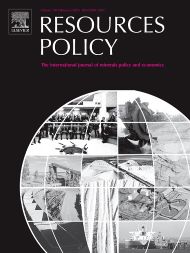Commodity price and fatalities in mining – Evidence from copper regions in Chile
On October 13th, 2010, the world was glued to the TV screen to watch the rescue of the 33 miners that spent 69 days trapped 700 m underground in a Chilean copper mine. While the 33 miners were rescued alive, 43 copper miners died in Chile the same year due to accidents in mining operations – the most significant number of mining fatalities in more than 20 years. The same year, copper reached its highest average annual price in history. Does this mean that high commodity prices induce a higher number of fatal accidents in mining operations? This paper addresses this question using 21 years of accident data in copper mines in Chile. We find that when the international price of copper surpasses approx. $5200/tonne, there is a strong positive correlation with the number of fatalities in copper mining. Scrutinizing such findings, we observe that the relationship mainly occurs with companies’ direct employees, while the number of deaths within contractors does not vary along with the copper price. Our results suggest that in the wave of high commodity prices, mining operations intensify their production processes, including rushing to bring back medium-sized operation sites that have previously been in care and maintenance, and which negatively affects the safety of operations.
Language: English
Publisher: Resources Policy
Region: South America
Type: Article
CITATION
Arratia-Solar, A., & Paredes, D. (2023). Commodity price and fatalities in mining–Evidence from copper regions in Chile. Resources Policy, 82, 103489. https://doi.org/10.1016/j.resourpol.2023.103489

